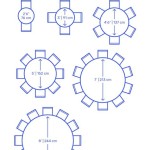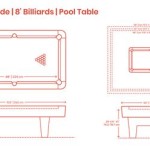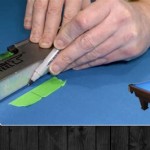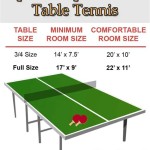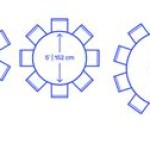Modern Outdoor Patio Side Tables: Functionality and Style
Outdoor patio side tables have become an essential element in modern outdoor living spaces. They provide a convenient surface for drinks, snacks, books, or decorative items, enhancing the functionality and aesthetic appeal of patios, decks, and gardens. The evolution of outdoor side table design has seen a shift towards modern aesthetics, emphasizing clean lines, durable materials, and versatile functionality. This article explores the key characteristics, material considerations, and design trends in modern outdoor patio side tables, highlighting their importance in creating comfortable and stylish outdoor environments.
Understanding the Modern Aesthetic
The term "modern" in the context of outdoor furniture often refers to designs that embrace simplicity and functionality. Modern outdoor patio side tables typically feature minimalist silhouettes, geometric shapes, and a lack of ornate detailing. The focus is on clean lines, uncluttered surfaces, and a sense of understated elegance. This design philosophy contrasts with more traditional or ornate styles, which may incorporate intricate carvings or elaborate embellishments.
Color palettes in modern outdoor furniture tend to be neutral, often incorporating shades of gray, black, white, and earth tones. These colors create a sense of calmness and sophistication, allowing the side table to seamlessly integrate into a variety of outdoor settings. Pops of color can be introduced through accessories such as cushions, planters, or decorative objects, providing visual interest without compromising the overall modern aesthetic.
The emphasis on functionality is equally important. Modern side tables are designed to be practical and user-friendly. Features such as adjustable heights, built-in storage, or foldable designs are common, catering to the diverse needs of outdoor living. The goal is to create a piece of furniture that is both visually appealing and highly functional.
Material Considerations for Outdoor Durability
The selection of materials is a critical factor in ensuring the longevity and performance of outdoor patio side tables. Outdoor environments expose furniture to a range of weather conditions, including sunlight, rain, wind, and temperature fluctuations. Therefore, materials must be chosen for their durability, resistance to weathering, and ease of maintenance.
One of the most popular materials for modern outdoor side tables is powder-coated aluminum. Aluminum is lightweight, strong, and naturally resistant to rust and corrosion. Powder coating provides an additional layer of protection against the elements, enhancing its durability and preventing chipping or fading. Aluminum side tables are easy to clean and maintain, making them a practical choice for outdoor use.
Teak wood is another highly regarded material for outdoor furniture. Teak is a dense, hardwood known for its exceptional durability and natural resistance to decay, insects, and moisture. Over time, teak will weather to a beautiful silver-gray patina, adding character and charm to the side table. While teak is more expensive than other materials, its longevity and aesthetic appeal make it a worthwhile investment for many homeowners.
Synthetic materials, such as high-density polyethylene (HDPE) and resin wicker, are also commonly used in modern outdoor side table construction. HDPE is a durable, weather-resistant plastic that can withstand extreme temperatures and prolonged exposure to sunlight. Resin wicker is a synthetic material that mimics the look of natural wicker but is more resistant to fading, cracking, and mildew. These materials are often used to create lightweight, low-maintenance side tables that are ideal for poolside or patio settings.
Stone and concrete are increasingly popular materials for creating modern outdoor side tables. These materials offer a natural, earthy aesthetic and are incredibly durable. Stone side tables can range from sleek, polished granite to rugged, textured slate. Concrete side tables often feature minimalist designs and can be stained or sealed to enhance their weather resistance. While stone and concrete are heavier than other materials, their stability and durability make them a suitable choice for exposed or windy locations.
Design Trends in Modern Outdoor Patio Side Tables
The design of modern outdoor patio side tables is constantly evolving, reflecting changing trends and consumer preferences. Several key trends have emerged in recent years, influencing the shape, size, and functionality of these essential outdoor furniture pieces.
Nested side tables are a popular trend, offering versatility and space-saving convenience. Nested tables consist of two or more tables of varying sizes that can be stored together when not in use. This design allows homeowners to easily create additional surface space when needed, accommodating guests or serving food and drinks. Nested tables are particularly well-suited for smaller patios or balconies where space is limited.
Side tables with built-in storage are another increasingly popular option. These tables feature hidden compartments or drawers that can be used to store outdoor accessories, such as cushions, blankets, or gardening tools. Built-in storage helps to keep the patio clutter-free and organized, enhancing the overall functionality of the outdoor space. The storage compartments are typically designed to be weather-resistant, protecting the contents from moisture and the elements.
Adjustable-height side tables are gaining popularity, offering customized comfort and convenience. These tables can be adjusted to different heights, allowing them to be used as a coffee table, a dining table, or a side table next to a lounge chair. Adjustable-height tables are particularly useful for creating versatile outdoor spaces that can be adapted to different activities and needs.
Geometric shapes and asymmetrical designs are a prominent trend in modern outdoor side tables. These designs often feature bold angles, clean lines, and unexpected silhouettes. Geometric side tables add a touch of visual interest and contemporary flair to the patio, creating a focal point that complements the surrounding furniture and landscaping. Asymmetrical designs can create a sense of movement and dynamism, adding personality to the outdoor space.
Sustainability is an increasingly important consideration in outdoor furniture design. Many manufacturers are now using recycled materials, such as recycled plastic or reclaimed wood, to create eco-friendly side tables. These materials reduce waste and minimize the environmental impact of furniture production. Additionally, some side tables are designed to be easily disassembled and recycled at the end of their lifespan, further promoting sustainability.
Integrating Side Tables into Outdoor Spaces
The placement and arrangement of outdoor patio side tables can significantly impact the overall look and feel of the outdoor space. Careful consideration should be given to the size, shape, and style of the side table, as well as its relationship to other furniture and landscaping elements.
When arranging side tables, it is important to consider the flow of traffic and the intended use of the space. Side tables should be placed within easy reach of seating areas, providing a convenient surface for drinks, snacks, or books. They should also be positioned in a way that does not obstruct pathways or create tripping hazards.
The size of the side table should be proportionate to the surrounding furniture. A small side table may be suitable for a balcony or small patio, while a larger side table may be necessary for a spacious deck or garden. The height of the side table should also be considered, ensuring that it is comfortable to use when seated.
The style of the side table should complement the overall aesthetic of the outdoor space. A modern side table with clean lines and neutral colors will typically blend well with a contemporary patio design. A rustic side table with natural wood and textured surfaces may be more appropriate for a traditional or farmhouse-style outdoor space.
Side tables can also be used to create visual interest and define different zones within the outdoor area. A pair of matching side tables can be placed on either side of a sofa or lounge chair, creating a sense of symmetry and balance. A single side table can be used as a focal point, adding a touch of personality and style to a corner or empty space. Side tables can also be used to connect different areas of the patio, creating a cohesive and inviting outdoor living space.
In conclusion, modern outdoor patio side tables offer a combination of functionality, durability, and style, enhancing the comfort and aesthetic appeal of outdoor living spaces. By carefully considering materials, design trends, and integration strategies, homeowners can select side tables that complement their personal style and create a welcoming and functional outdoor environment.

Joyce Outdoor Modern 16 5 Side Table With Steel Legs Patio

Vida Modern Patio Side Table Gray Christopher Knight Home Target

Terrazzo White Modern Outdoor Patio Side Table Reviews Cb2

Modern Solid Wood Slat Top Outdoor Square Side Table Walker Edison

Modern Outdoor Furniture Room Board

Terrazzo Black Outdoor Patio Side Table Reviews Cb2

Hanover 3 Piece Wicker Bistro Set Modern Outdoor Furniture 2 Chairs 15in Side Table W Steel Frames And Gray Cushions Accent3pc Gry The Home Depot

Tortuga Outdoor Lakeview Modern Square Aluminum Side Table Patio Furniture Piece With Weather Resistant Finish Sky Char The Home Depot

Modern Outdoor Furniture Lounge West Elm

Outdoor Modern Wicker Shelf Side Table With Umbrella Hole Nh003003 Noble House Furniture
Related Posts

